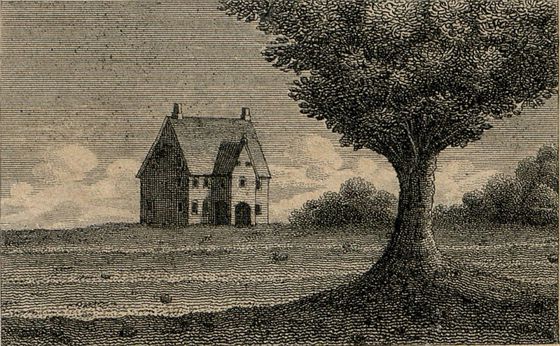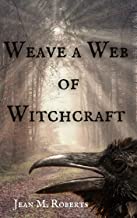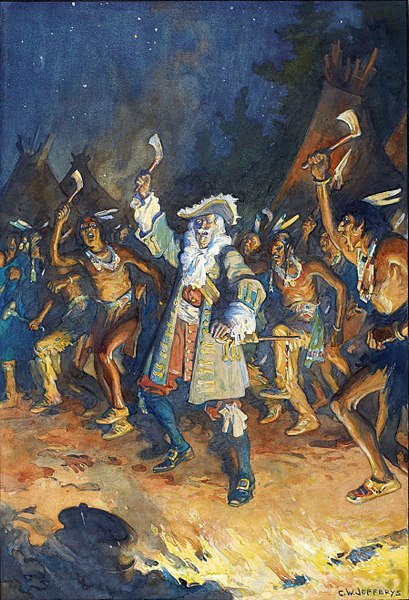
As an American, I can trace my ancestry to the British Isles. According to my DNA profile, I am 100% Anglo/Irish. I am also a lover of history. Like Mercedes I am a novelist, but although I adore medieval English history, I don’t know enough to write with any authority. My historical novels are focused on Colonial America, from the early beginnings, through the War for Independence.

My first book, Weave a Web of Witchcraft is set in Springfield, Massachusetts in 1650. The story revolves around a real couple, Hugh and Mary Parsons, who were both accused of witchcraft. Using their actual recorded testimony, I have recreated their lives and the events that led to their arrests. My second book, Blood in the Valley, is the fictionalized tale of my ancestors before and during the American Revolution. The story follows them from New Hampshire to the wilds of the Mohawk Valley of New York.
This brings me to my next book, The Heron, which has a dual time narrative; modern day and the 1690s and is set along the banks of the Oyster River in New Hampshire. War plays a big role in this chilling story, specifically, King William’s War. This was the opening conflict of what was to be called The French and Indian Wars. A brutal fight, waged on both sides, it would last until 1763, when a peace agreement, the Treaty of Paris, was signed by the European powers. But the fight with and against the native people on the American continent continued well into the 19th century.

Like many American children, I grew up playing games we called ‘Cops and Robbers’ and living in Texas, ‘Cowboys and Indians’. The cops and the cowboys were the good guys; men in white hats riding white horses. The men in black, the bad guys, were the robbers and the Indians. We fought over who had to be the baddie, the enemy. The idea of the ‘bad Indian’ was ingrained in us from a young age.
From the day the first white man stepped ashore, the Native population has been maligned. Englishmen were smarter, braver, they had God on their side and like all conquerors, entitled to take what they wanted. England itself had been swept by conquering peoples from time immemorial. The Romans, the Saxons, the Norsemen, the Normans. It was the natural order of things.
Along with guns, and a healthy sense of superiority, Europeans brought plague and pestilence with them to the new world. Historians call it ‘The Great Dying’, 90% of the native population perished. The Americas were ripe for the taking.
In 1620, a group of English religious separatists, set sail for the Colony of Virginia. At that time, the territory of Virginia stretched as far as today’s New York, and their intended destination was the mouth of the Hudson River. They didn’t make it. Blown off course they found themselves far to the north. This year, 2020, marks the 400th anniversary of the Mayflower voyage.
When we think of the Pilgrims, fresh off the boat from Plymouth, England, newly landed on the Cape of Massachusetts, images of a peaceful Thanksgiving dinner come to mind. The starving settlers were aided by Native Americans, taught to grow food in the unfamiliar land. It’s a lovely narrative but this peaceful co-existence was short lived.
As wave after wave of Englishmen arrived on the shores of North American, the Native Americans became increasingly concerned. Conflict was inevitable.
Loss of land, subjugation to harsh English law, and enslavement led to a rise in tension between the two peoples. In 1675 the Native Americans along the North East coast banded together under the leadership of a Wampanoag man, Metacom. The English called him King Philip. The Natives lashed out at the interlopers.
This war, King Philip’s War, was a full-out assault on the colonists in Rhode Island, Massachusetts and Connecticut. Together with warriors from Nipmuck, Pocumtuck and Narraganset tribes brought death and destruction to the Colonist, their combined efforts all but drove the colonist into the sea. If they had held together, the English would have been penned up in coastal cities, and possibly forced to abandon New England.
But this was also a war between Native Americans. The Mohegans and the Mohawks of New York, allied themselves with the English and fought against Metacom and his coalition. For the better part of 14 months, Metacom and his warriors ravaged New England. He was captured and killed in August of 1676 and the fight gradually dwindled until the signing of a peace treaty in Casco, Maine in 1678. Hundreds, if not thousands of native fighters and their families were rounded up and shipped to the Caribbean to work as slaves on the sugar plantations.

Peace did not last long. In 1689 King William of England declared war on France. As battles waged on the Continent, simmering tensions in the Colonies flared. Canada was, at that time, a French territory. The Governor, Louis de Buade, Comte de Frontenac, devised a three-prong plan of attack against the Colonies of New York, New Hampshire and Massachusetts (Maine was part of Massachusetts). In the winter of 1690, a force attacked the town of Schenectady in New York, a second attacked Salmon Falls in New Hampshire and the third destroyed Fort Loyal in Maine. The loss of the Fort, near present day Portland, emptied the frontier.
Hundreds of settlers, men, women and children were killed or taken as captives to Canada. The numbers may not seem significant but the population of these settlements was small, and so the impact of losing males of working age had a huge effect on the economy and the ability of these people to survive. That these people survived at all is testament to their tenacity. King William’s War ended 1697 but flared again in 1702 with Queen Anne’s War.
For many Americans this is dry dusty information, naught but boring dates without meaning. If your family, whether they were of English descent or Native American, lived in New England in the 17th – 18th century it is almost certain that they were also affected by these wars. If nothing else the mental toll must have been enormous. In fact, Mercy Lewis, one of the Salem Witchcraft accusers fled the attack on Casco Bay in 1689, where her parents were both killed, leaving her an orphan and forced to work as a servant. It has been suggested that the psychological damaged inflicted by the war might have played a part in her role as an accuser.
In these days of political correctness and technology, I am sure that no child today plays ‘Cowboys and Indians’ as we did. But I can’t help but think that long before there were cowboys, there were Colonists who fought, right or wrong, the Indians.
My upcoming book, The Heron, is set along the Oyster River of New Hampshire. This area was subject to repeated attacks during King William’s War. My story has two main characters, Abbey Coote a modern-day woman and her ancestor Mary Foss who struggled to survive, not on the war, but life in general. My story is full of period details and as accurate a portrayal of life in the 1690s as I could get. Be sure to check it out. Its release date is April 15 2021.

The past calls to those who dare to listen…
An invitation arrives; Abbey Coote, professor of American Studies, has won an extended stay in a historic B&B, Pine Tree House. The timing is perfect. Abbey is recovering from an accident which left her abusive boyfriend dead and her with little memory of the event. But her idyllic respite soon takes a terrifying turn. While exploring the ancient house, Abbey comes face to face with Mary Foss, a woman dead for 350 years. Through a time/mind interface Abbey experiences the horrors of Mary’s life, living at tht edge of the civilized world in 1690s New England. As Abbey faces her worst fears, she struggles to free them both from the past.
Available for Preorder: https://bit.ly/3nqj49Q
Meet Jean M. Roberts

Jean M. Roberts lives with her family outside of Houston, Texas. She graduated from the University of St. Thomas in Houston with a BSN in nursing. She then joined the United States Air Force and proudly served for 8 years. She works full time as a nurse administrator for a non-profit.
Connect with Jean
My Website: The Books Delight
Amazon Author Page
Follow me on Twitter
Follow me on Facebook
Instagram